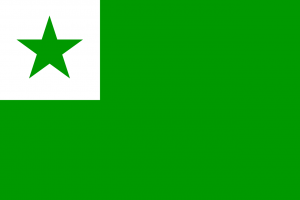Language/Esperanto/Grammar/Gender
Hi Esperanto learners! 😊
In this lesson, we will learn about the gender of nouns in Esperanto. We will look at the rules for determining the gender of nouns and how to use them in sentences. We will also look at some examples of gender in Esperanto. So let's get started!
Gender in Esperanto
In Esperanto, nouns have two genders: masculine and feminine. The gender of a noun is determined by its ending. Nouns that end in -o are masculine, while nouns that end in -a are feminine. For example, the word for "dog" is hundo (masculine) and the word for "cat" is kato (feminine).
There are some exceptions to this rule. Nouns that end in -e are usually neuter, but there are some exceptions. Nouns that end in -i are usually masculine, but there are some exceptions. Nouns that end in -u are usually feminine, but there are some exceptions.
Using Gender in Sentences
When using gender in sentences, you must use the correct form of the adjective or pronoun that corresponds to the gender of the noun. For example, if you are talking about a dog, you would use the masculine form of the adjective or pronoun. If you are talking about a cat, you would use the feminine form of the adjective or pronoun.
For example, if you wanted to say "The dog is big", you would say "La hundo estas granda". Here, the word hundo is masculine, so you must use the masculine form of the adjective granda.
If you wanted to say "The cat is small", you would say "La kato estas malgranda". Here, the word kato is feminine, so you must use the feminine form of the adjective malgranda.
Examples
Here are some examples of gender in Esperanto:
| Esperanto | Pronunciation | English Translation |
|---|---|---|
| la hundo | lah-hoon-doh | the dog |
| la kato | lah-kah-toh | the cat |
| la knabo | lah-knah-boh | the boy |
| la knabino | lah-knah-bee-noh | the girl |
| la patro | lah-pah-troh | the father |
| la patrino | lah-pah-tree-noh | the mother |
Practice
To improve your Esperanto Grammar, you can also use the Polyglot Club website. Find native speakers and ask them any questions!
Quiz
Test your knowledge of gender in Esperanto with this quiz:
- What is the gender of the word hundo?
- What is the gender of the word kato?
- What is the gender of the word knabo?
- What is the gender of the word knabino?
- What is the gender of the word patro?
- What is the gender of the word patrino?
Answers:
- Masculine
- Feminine
- Masculine
- Feminine
- Masculine
- Feminine
➡ If you have any questions, please ask them in the comments section below.
➡ Feel free to edit this wiki page if you think it can be improved. 😎


